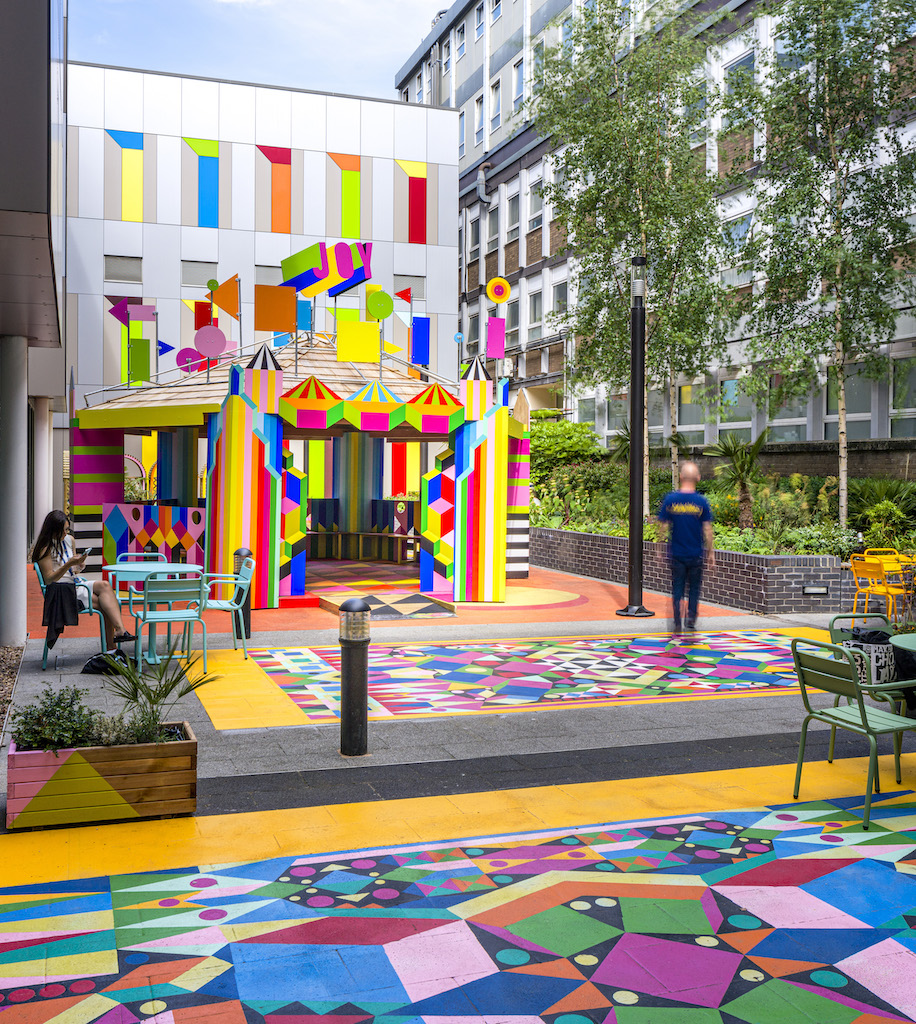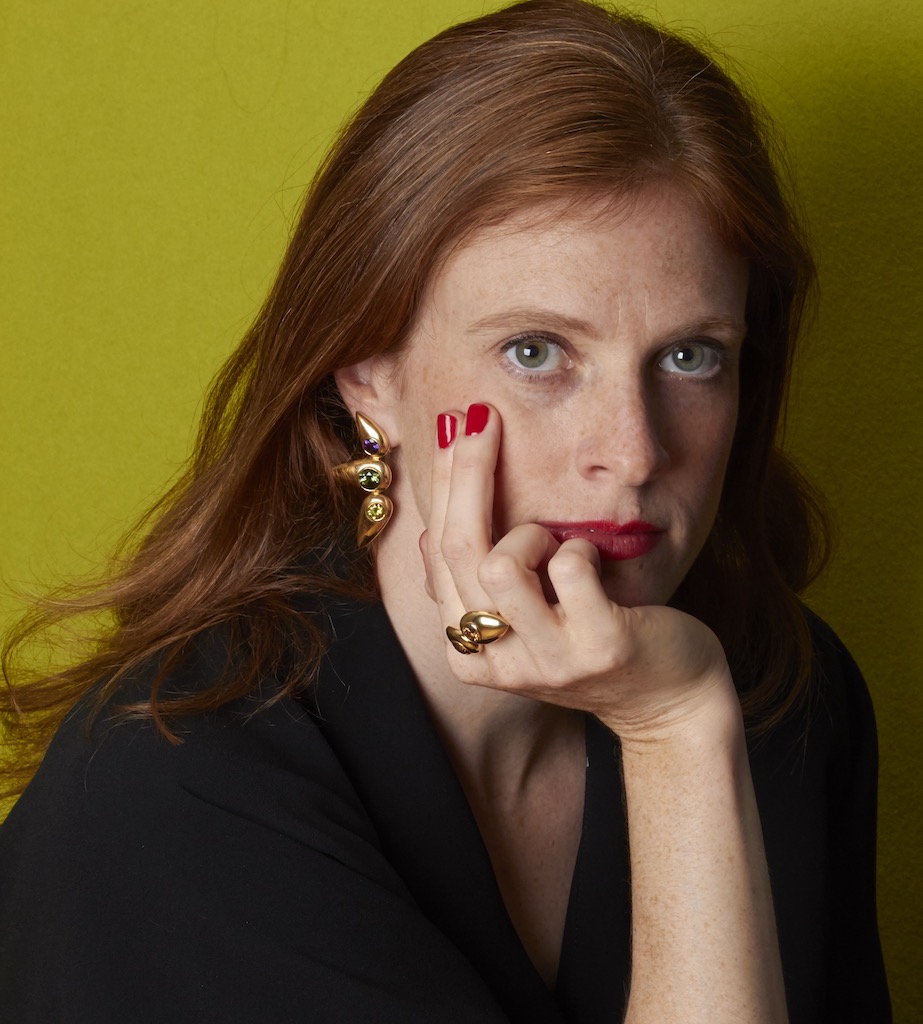

Interview Artist & Designer Morag Myerscough
THE WICK: The 22nd edition of London Design Festival kicks off this week – what are you most excited to see?
Morag Myerscough: I always like the installations on the street. This year I am excited to see Vert by Diez office, American Dream by Nina Tolstrup, Chromatic River Walk by Kitty Joseph, Fandangoe Discoteca by Annie Frost Nicholson, and inside Battersea Power Station — Together We Rise by Poor Collective.
TW:
You’ve long championed the power of community and coming together in your installations and spatial artworks; among your major projects was Sheffield Children’s Hospital, where you designed 46 bedrooms on their new wing.
You subsequently designed the incredible Joy Garden at Sheffield Children’s Hosptial, made possible by funding from Method Products. Why do you believe design is a positive force for within the public realm?
MM: Done well art and design can completely change the atmosphere of a space; can make a place that appears cold and unfriendly; feel warm and welcoming and even speed up people getting better. It is important to listen to the people using the spaces, patients, family, doctors nurses, and all staff to understand what will make a difference and then not to be scared to incorporate your own life experience to make a place better than people could have imagined. It is important to have a vision that comes from the right place – your heart – and work that through right to the completion of the project. Sometimes it is very small things that make a difference: a smile, recognition, a cup of tea, time to listen and be heard, if you can make space that enables all the people to have more time to do these things it will make a difference and be proud of the space they have made together.
TW: You were born and raised in London. How has the city’s design personally shaped you?
MM:
London is an incredibly exciting, vibrant place to live. I was lucky to be born and bred here, so it is my home and it is the place I feel like I belong and it is what I know. The city is forever changing and I love change – it keeps you curious and focused. Nothing stands still. When I was growing up, London was a lot greyer and quite grim in more places than it is now and I love how now the streets are so much more animated and the people feel like they can be part of their outside spaces. I would like only clean vehicles to be on the roads which would make the air cleaner and the different sounds could be heard without such deafening traffic noise; maybe even bird song.
Many many attitudes have changed for the better, I am very happy to say and I am also very glad I was able to play a small part in that change.
TW: Colour is another trademark of your work; you work with a bold, kaleidoscopic and joyful palette. Colour can be provocative – why is it so key to your practice, and how does it respond to your surroundings?
MM:
I think being brought up surrounded by London’s grey buildings, roads and pavements — seeing colour was a joy. My mother Betty Fraser Myerscough was a textile artist and our house was always full of fabrics and threads, and I loved sewing from a very early age, so I was introduced to the excitement of colour very young, and the nuances, for example the difference between commercially dyed colours and naturally dyed colours.
I remember when I first started St Martin’s, people just wanted to use primary colours and even at that time I was so shocked when I knew the wonderful expanse of colours that were at our fingertips, why limit yourself? I get super excited seeing one of my installations in a very grey environment, it just sings out. And from watching people respond to my work – I can see it also brings people lots of joy too. There are many haters but I don’t care about them, I think they have lost the joy of life.
“The city is forever changing and I love change – it keeps you curious and focused. Nothing stands still.”














